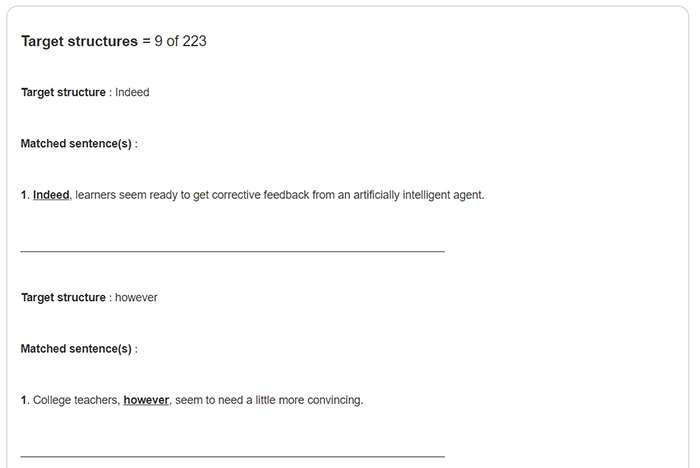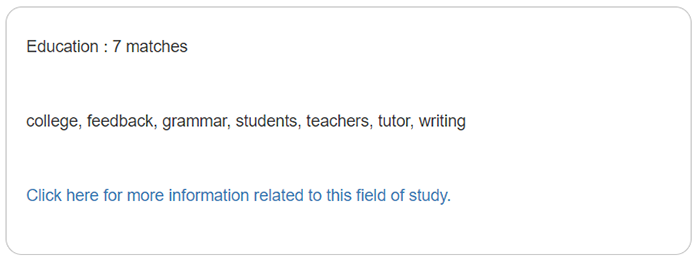10 Reasons to Use a Grammar Checker with College Students
When students went on strike in 2012, a colleague and I used the extra time to launch a free online grammar checker website for our English Second Language college students. Now, after 6 years of development, the Virtual Writing Tutor is in its third incarnation. To see some of its evolution, see earlie stories about the development of this grammar checker published on Profweb in 2013. Better-looking, more powerful, and more accurate than ever before, it has attracted the interest of researchers and has corrected the writing of nearly a million learners from 211 countries. Here are 10 reasons why ESL teachers should consider using the Virtual Writing Tutor grammar checker with their college ESL students.
1. Learning to use a grammar checker is easy
It only takes a minute to learn to use the Virtual Writing Tutor. Simply paste your text into the text area, click “Check spelling” and “Check grammar.” The buttons are clearly labelled in simple English, and this grammar checker video tutorial quickly gets hesitant students up to speed.
2. Give faster feedback
An online grammar checker can provide feedback on surface errors in just 2 seconds—not 2 weeks. A teacher who asks students to use a grammar checker effectively increases their turnaround time.
3. Provide feedback on multiple drafts
The usual protocol for writing assignments at the college level is to assign a writing task, collect a first draft, mark it up with feedback, return it to students, and then collect it again to grade it. What if teachers could give feedback on multiple drafts? Encouraging the use of the Virtual Writing Tutor throughout the drafting process allows students to get grammar feedback on every draft.
4. Give more writing assignments while reducing your workload
If you ask all your students to check their spelling and grammar errors using an online essay checker, 150 student texts will get feedback in about two seconds. You will likely still want to collect those writing assignments from students and give feedback on other aspects of the writing task, but many of the surface errors will already have been addressed. By simply requiring students to eliminate avoidable errors from their writing by using an essay checker, teachers could offer their students more writing practice opportunities without getting swamped with corrections.
5. Teach a valuable revision strategy
Good language learners seek out corrective feedback and use it strategically to revise and improve their texts. The Ministry of Education recognizes the importance of revision strategies and calls for their application as one standard of performance in the attainment of the course competency. One strategy that students can learn in 15 weeks is how to eliminate avoidable errors by checking every text for spelling, grammar and punctuation errors using a grammar checker.
6. Evaluate students’ writing more objectively
The definition and treatment of errors is variable because of the subjective nature of what teachers consider to be an error and what constitutes error-free writing. A more objective protocol for evaluating errors in writing is possible. We could, for example, begin by simply asking students for a draft that is free of avoidable errors—meaning free of the spelling and grammar errors that the Virtual Writing Tutor is able to catch.

The Virtual Writing Tutor provides writing analytics that can make evaluations more objective.
A second way that the Virtual Writing Tutor can support objective evaluation of student writing performance is by counting required vocabulary items.
- If you ask students to use certain target structures—for example, transition words—you can use the Target Structure vocabulary checker to count how many were used.

The Virtual Writing Tutor’s Target Structure vocabulary checker allows the teacher to search for specific words and see in what context the student used them.
- If you asked your students for more field-related vocabulary items, the Field-Related vocabulary checker can count words associated with each field and list them for you.

The Virtual Writing Tutor’s Field-Related vocabulary checker finds words associated with a particular field in the student’s text.
- If you wanted students to avoid conversational vocabulary in their writing, you can use the academic vocabulary profiling tool to list all the academic and conversational words in the student’s text.

The Virtual Writing Tutor’s Academic Vocabulary profiling tool identifies academic and conversational word choices in the student’s text.
7. Be explicit
Teachers can write explicit corrections and metalinguistic explanations above the error in a student’s text. However, double-spacing often does not provide enough room to explain a grammar or punctuation rule fully. Since dynamic webpages can expand to fit any amount of content, the Virtual Writing Tutor can be much more explicit, explaining what is wrong, suggesting how to fix it, providing links to resources, and even listing counter examples for contrast.

The Virtual Writing Tutor can give very detailed feedback with links to remedial practice activities because it is not limited to commenting in the margins of a page.
8. Give remedial practice with the learner’s own errors
For logged-in members, the Virtual Writing Tutor isolates and stores each sentence it detects as having an error. Those sentences are then randomized and added to an error correction game. By playing the game, the learner can review the errors they made and the corrections they need to make to eliminate those errors in the future.

The Virtual Writing Tutor’s Games page automatically generates a review quiz based on the student’s most frequent errors. This feature requires a free profile.
9. Promote autonomy
Have you ever had a student who said they couldn’t finish an assignment because he or she was waiting for your feedback or needed and explanation about a correction you made? Teaching students to use a free grammar checker will instill and sustain learner autonomy.
10. Promote lifelong learning
If we teach students how to use an online grammar checker website during their semester with us—giving them enough repetitions positive experiences with it, helping them recognize and manage false alarms, and showing them its strengths and weaknesses—there is a good chance that they might continue to use that grammar checker after their English course is over, thus promoting lifelong learning.
Conclusion
There are plenty of good reasons college ESL teachers should integrate the Virtual Writing Tutor into their pedagogy. Can you add any to my list above? Do you use the Virtual Writing Tutor with your students? Have you tried using it in your pedagogy and decided against fully integrating it into your courses? Please share.

